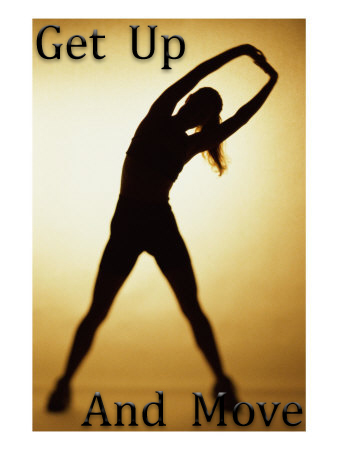 What exactly is osteoporosis? Osteoporosis causes thinning of the bones and the loss of bone density over time. This decrease in density and increase in brittleness can lead to an increase in the probability of bone breakage with a fall. There are several reasons this occurs such as aging, genetics, and hormonal factors. Not a whole lot we can do about those. However, there are some things we can do to help prevent and even slow down the progress of this disease.
What exactly is osteoporosis? Osteoporosis causes thinning of the bones and the loss of bone density over time. This decrease in density and increase in brittleness can lead to an increase in the probability of bone breakage with a fall. There are several reasons this occurs such as aging, genetics, and hormonal factors. Not a whole lot we can do about those. However, there are some things we can do to help prevent and even slow down the progress of this disease. 
High-intensity (high-impact) exercising can help to significantly increase bone circumference and strength [1]. What does this consist of?
Strength training, such as lifting free-weights, machine-weights, resistance bands or even water exercises.
Weight-bearing aerobic activity, such as running, aerobics, calisthenics, and dancing.
Flexibility exercises, such as yoga and stretching.
Stability and balancing exercises, such as tai chi or standing on one leg.
Some of these exercises, such as flexibility and stability exercises as well as lower-impact aerobic exercises like walking, may not directly increase your bone density. However, performing these exercises can help to improve your strength and balance, helping to prevent falls.
It is key to note, if you are unsure about your bone health, or have been diagnosed with osteoporosis (rather than the less severe form of the disease, osteopenia) it is critical that you see your physician for further guidance with an exercise program.
Aside from exercise, eating the proper amounts of calcium, Vitamin D, and phosphorus can also help to keep your bones strong and healthy. What are some key items you can eat to help you reach the 1,000mg (ages 19-50) to 1,200mg (ages 51+) of calcium, 700mg of phosphorous, and 5 mcg (ages 19-50), 10mcg (ages 51-70), and 15mcg (71+) of Vitamin D each day [2]?
Vitamin D is actually a hormone (not a true vitamin) which can be produced by your skin using sunlight. However, if you're short on sunlight, fish oil, fish (such as salmon, mackerel, tuna, shrimp), fortified milk, and fortified margarine can provide alternative sources of Vitamin D.
Calcium can be found in sources such as milk and other milk-based products, green leafy vegetables (such as spinach), fish with bones such as salmon or sardines, and other calcium-fortified products such as soy milk and orange juice.
Phosphorus is one of the easiest minerals to come across, and is found in most foods, especially animal foods. Few people are unable to reach the recommended daily amount.
What kind exercises or dietary changes have you done to help prevent or slow the onset of osteoporosis?
[1] Vainionpaa A, Korpelainen R, Sievanen H, Vihriala E, Leppaluoto J, Jamsa T. Effect of impact exercise and its intensity on bone geometry at weight-bearing tibia and femur. Bone. 2007;40(3):604-11.
[2] Dunford M and Doyle JA. Nutrition in Sport and Exercise. Belmont, CA: Wadsworth, 2008. pp. 272-73.








Thanks a lot for the info. I have this problem and have broken or fractured 6 bones in the last couple of years. Thankfully, it has slowed down recently.
ReplyDelete